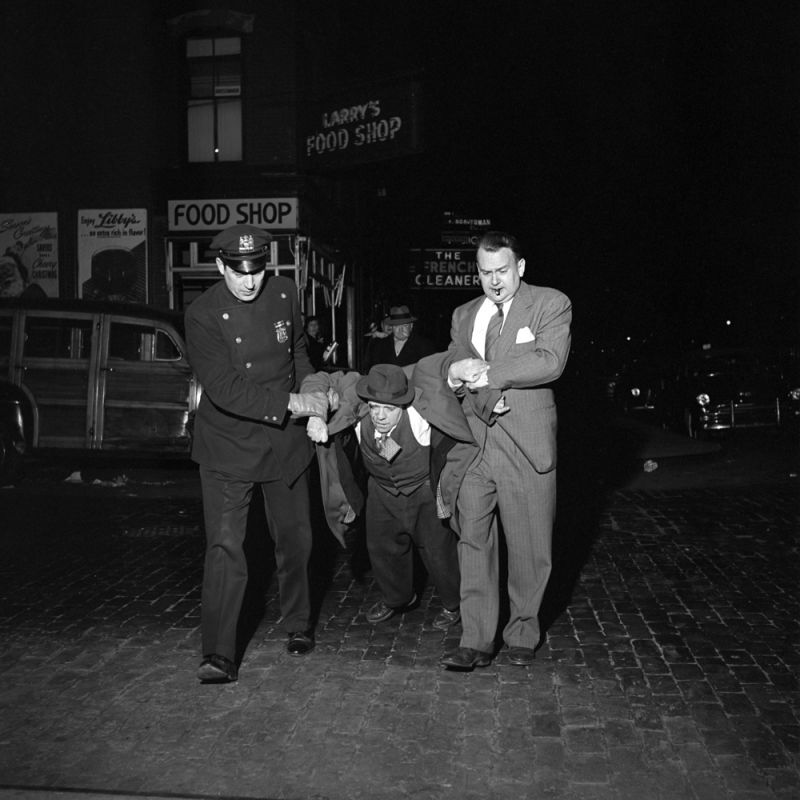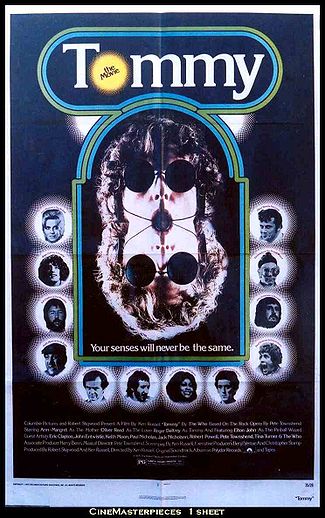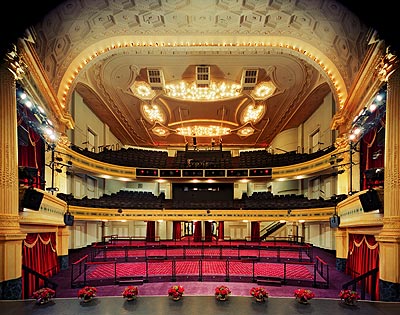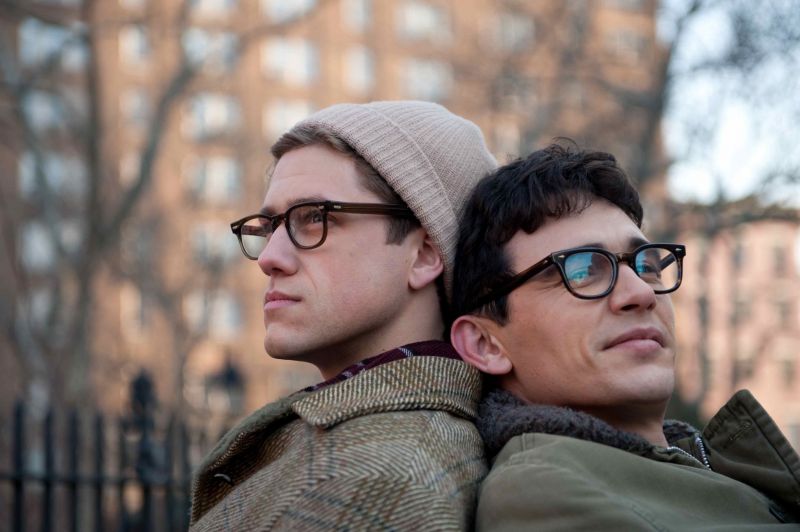
With all due respect to Matthew McConaughey and Woody Harrelson, the distinction of true detective must go to history sleuth John Maloof, whose documentary Finding Vivian Maier smokes out one of the art world's most intriguing tales. Together with fellow director/producer Charlie Siskel, Maloof set about making sense of the late street photographer's life and work, ultimately launching her name among the pantheon of outsider artists. It's hard to imagine a less likely candidate for such exaltation than a nanny -- the profession that enabled Maier to shoot and hoard her countless images -- but plainly she had more on her mind than wiping kids' noses.
The chief irony of Finding Vivian Maier is that Vivian Maier went to great lengths not to be found. Maloof more than anyone is responsible for her posthumous fame. In 2007, while seeking historic images for a book he was co-authoring about Chicago's Portage Park neighborhood, the then 26-year-old realtor and flea-market buff put down $380 on a box at a furniture and antique auction. This box, whose provenance was a storage locker repossessed to pay Maier's debts, would change his life.
The photos inside caught even his untrained eye, but it wasn't until 2009 that Maloof started to grasp their caliber. He snatched up additional caches, amassing more than 100,000 negatives, including 20- 30,000 still in rolls plus some 3,000 prints. And that's not counting the hundreds of hours of Super 8 and Super 16 film footage and audio cassettes or the mountain of newspapers and curios. One year prior, his Google search had dredged up nothing about their creator, but now the same prompt revealed Maier's obituary of scant days earlier. She had made it to 83.
To see if he was onto something, Maloof put samples of Maier's work on a blog. Nothing happened. Then he tested Flickr. The response was ecstatic. Meanwhile, he began taking his own photos. Eventually the budding shutterbug bought the same Rolleiflex camera that Maier used from 1952 till the mid-70s, and started making his own headway in the art form. The film doesn't mention that his role model herself had taken up a Rolleiflex after seeing what it could produce -- at MoMA's early 50's exhibition entitled Five French Photographers [Brassai, Cartier-Bresson, Doisneau, Ronis, Izis].
Following scraps of leads, Maloof was able to ascertain that Maier was born in New York in 1926, but spent much of her childhood in her mother's native France and returned to the City in 1951 at age 25. Yet for each mystery he cracked, the filmmaker struck new unknowns about his elusive subject. Lucky for him and us, her work itself drops hints. Maier's snapshots of Bangkok, India, Thailand, Egypt, Yemen and Latin America indicate the sweep of her travels, as we see in a tantalizing montage set to a pulsating Latin beat. She and her camera also made it to Los Angeles and the American Southwest. Yet the bulk of Maier's collection is from Chicago, where her nanny jobs from 1956 to the 1990s brought her into the orbit of many of the film's talking heads. (Small world: one of them was talk-show host Phil Donahue.)
"I'm sort of a spy" is how she described herself, according to featured linguist Barry Wallis. Peering down into her viewfinder rather than conspicuously shooting at eye-level, she documented people at the fringes of American life: a turbaned elderly black woman hunched over, napping, against a snatch of the Chicago skyline above; a white miscreant being hauled off by a cop and a civilian in the night; a construction worker whose rump is slathered in concrete. Much of the work reflects the social and political consciousness of her inner newshound, but innocence and simplicity similarly piqued her interest. Maier was especially drawn to children. Some belonged to the families she worked for, and they share their recollections of venturing out from their suburban preserves to gritty urban shoots, including in the Chicago stockyards and neighborhoods on the seedy side of the tracks.

In her self-portraits, the tall, robust woman behind the camera is often staring out defiantly under a brimmed hat. She remained single all of her life and was by all accounts highly guarded. There are even intimations that she had been sexually molested, which might help explain why she was, according to commentator Ginger Tam, "afraid of being touched." You'd never guess this from the raw moments Maier captured "where two presences are actually vibrating together," to quote the acclaimed photographer and co-author of Bystander: A History of Street Photography Joel Meyerowitz. He also points up the "human understanding and warmth and playfulness" of Maier's gaze. Perhaps it was precisely the absence of sexual desire that sent her searching for a different form of intimacy.
Three-penny psychology aside, Maier's photograpy belongs to the quotidien diary tradition exemplified by Henri Cartier-Bresson, Garry Winogrand, Diane Arbus and Weegee. Other genre-mates include Eugène Atget, Berenice Abbott, André Kertész, Walker Evans, Herb Ritts, Thomas Struth, Helen Levitt and Lisette Model. Photographer Mary Ellen Mark quips on-camera that Maier was like “Robert Frank with a square format.”
Finding Vivian Maier lets us find Vivian Maier through its varied visual vocabulary. Photographs establishing her legitimacy are framed with a black border as if in a contact sheet or album; and we're invited to appreciate their aesthetic merits for an extra beat. A more cinematic language comes into play with her less deliberate work that illustrates the story like B-roll. For these shots, editor Aaron Wickenden might zoom or pan and even style flush with the screen to suggest her featured film footage. She's an artist all right, though a saint she's not.
To the film's credit, it builds interest in Maier's mystique without resorting to hagiography. Several of her more disturbing photos chronicle the ordeal of a boy lying in the street after being hit by a car. "Miss Maier" had ostensibly privileged her art over her young charge's wellbeing, snapping away while he languished. Other hints of her sinister side come from the stories of individuals who had been entrusted in her care. Inger Raymond, who was nannied by Maier in the later, less stable years, nearly chokes up as she recalls being force-fed and, when unable to tie her shoelaces, was banged against a bookcase. How to square this with the accounts of others who saw her as Mary Poppins? (It's hard not to think that today her deteriorating mental state would be met with meds, however the art and artist might suffer.) Maloof serves as the driving gumshoe of this detective movie, but informing his quest are the testimonials of Maier's artifacts alongside the testimonials of her human observers. Ultimately it's up to us -- yet another set of private eyes -- to find Vivian Maier amidst the film's multiple exposures.
The evolving narrative of Maloof's own progression yields a shrewd study in juxtaposition. It also tugs at an ethical matter of self-interest. As the main keeper of Maier's canon, Maloof is now watching his star rise thanks to the very work that the artist kept from bringing her fame and fortune during her lifetime. "She wouldn't have put her babies on display," tsks talking head Carole Pohn, who may have been one of the very few adults Maier regarded as a friend.
In his director's statement, Siskel differentiates between the urge to conceal one's art and to destroy it. Like Franz Kafka's letter instructing that his work be burned unread after his death, he notes, Maier's ostensible desire that her work slip public notice was disregarded. But Kafka also incinerated roughly 90 percent of his work, whereas Maier squirreled away her vast oeuvre and then some. In a curious twist, evidence unearthed in the ancestral French village where Maier allegedly spent formative years suggests that her feelings about exposing her work may have been more complex than was previously thought.
As part of his avowed "mission to put Vivian in the history books," early on Maloof had tried but failed to interest MoMA and the Tate Modern in exhibitions of her work. Not to be deterred, he charged ahead with the publication of Vivian Maier: Street Photographer, and subsequently exhibitions cropped up in such places as Norway, the U.S., Britain, Germany, Denmark, Belgium and France. "I'm kind of compulsive with stuff," he confesses in an endearing understatement. Maloof may be just as driven as his subject, a trait that should expand audiences both for Maier's riveting work and for this riveting film.

Photo Credits:
FINDING VIVIAN MAIER poster courtesy of IFC Films.
Man being dragged by cops at night still from John Maloof and Charlie Siskel’s FINDING VIVIAN MAIER. Photo by Vivian Maier courtesy of the Maloof Collection.
Photo of John Maloof courtesy of IFC Films.
































